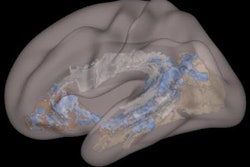Wednesday, December 4 | 3:50 p.m.-4:00 p.m. | SSM03-06 | Room S401CD
The value of cardiac MRI with T1 mapping in determining the diagnosis, treatment, and prognosis of Fabry disease is the topic of this Wednesday afternoon session.Dr. Tilman Emrich from University Medical Center Mainz in Germany will provide details on a multiparametric MRI approach to evaluating this rare genetic disorder, which can affect many parts of the body, including the heart, kidney, liver, and lungs.
Recently published studies have reported on the diagnostic potential of cardiac MRI with T1 mapping for detecting Fabry disease. For this retrospective study, Emrich and colleagues included 61 patients in all stages of Fabry disease and 57 healthy volunteers who underwent 3-tesla cardiac MRI scans. The protocol included cine imaging, T1 and T2 mapping, late gadolinium enhancement, and left and right ventricular feature tracking-based strain parameters.
The combination of left and right ventricular global longitudinal strain with T1 mapping yielded the highest diagnostic accuracy, with sensitivity and specificity greater than 82%, the researchers found.
"A multiparametric imaging approach incorporating feature tracking strain parameters and T1 mapping improved the diagnostic accuracy of cardiac MRI for detection of Fabry disease in all stages of disease," the group concluded. "Further research is needed to establish strain imaging as a surrogate for prognosis and therapy."



.fFmgij6Hin.png?auto=compress%2Cformat&fit=crop&h=100&q=70&w=100)




.fFmgij6Hin.png?auto=compress%2Cformat&fit=crop&h=167&q=70&w=250)











